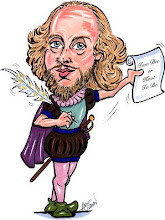Tudor London can be described as a prosperous, bustling city during the Tudor dynasty. In fact, the population increased from 75,000 inhabitants with Henry VII to 200,000 at the end of the 16th century.
The Tudor monarchs had a royal residence in London called Whitehall Palace and another in the countryside,called Hampton court , after Cardinal Wolsey gave it to Henry VIII.These Tudor kings and queens used what are now famous parks , such as Hyde Park or St. James's Park , as Royal Hunting forests.
Not many Tudor buildings survive today, mostly because of The Great Fire , which happened in 1666. Besides, , the 13 religious houses in London were __ converted for private use or pulled down for building materials____ after the Dissolution of the monasteries, which was Henry VIII's most decisive step against the power of the church in 1538. First the small, less powerful houses had their property confiscated and their buildings blighted (made unsuitable for use). They were followed the next year by the large houses.
Philosophical concepts of the power of the king over church may have played a part in Henry's decision to suppress the monasteries, but so did greed. The monasteries were rich, and a lot of that wealth found its way directly or indirectly to the royal treasury. Some of the monastery buildings were sold to wealthy gentry for use as country estates. Many others became sources of cheap building materials for local inhabitants. One of the results of the Dissolution of the Monasteries is that those who bought the old monastic lands were inclined to support Henry in his break with Rome, purely from self interest.
Apart from that, the theatres were banned from the city by the city authorities or guilds because plays wasted workmen's time ( so it wasn't for religious objection to the play's contents ). Then, they were built in the Southwark, where now a reconstruction of the Globe can be visited to learn about Tudor theatre.
At that time, London's financial rival was the city of Amsterdam, and to be able to compete with it , an international exchange was created in 1566.
(It was founded by the mercer Thomas Gresham in 1566 to enable London to compete for financial power with Amsterdam. This became the Royal Exchange in 1560, and is now housed in a massive Victorian building beside the Bank of England Museum in Mansion House Square.)
So, all in all, and because of many other events and facts, we can say that both London and England were powerful.
jueves, 11 de febrero de 2010
Suscribirse a:
Comentarios (Atom)
